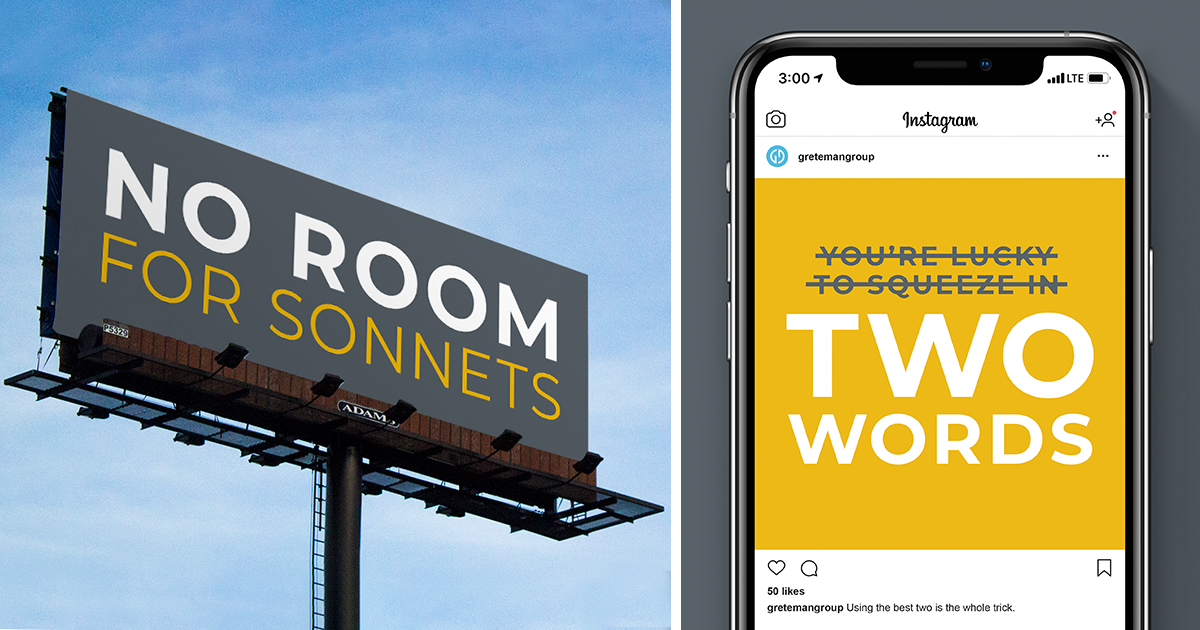Oh, my word. And my sentences, too.
03.09.20 · Greteman Group
When you write ad copy, sometimes your words come back from the designers in all caps STANDING AT ATTENTION LIKE SOLDIERS. You put your hand over your heart. So proud. Other times, those words are as pretty as a name on a cake and you want to squeal, clap and blow out the candles. There are times, though, when you tire of the sign making. Enough with all of the word treatments. You miss the way the little soldiers used to simply line up and march for you in long orderly columns of Times New Roman. You miss sentences. Period.
It happens like this: You close your eyes one day and try to remember how a line read. The rhythm of the thing. How it rolled along, babbling over the rocks and commas. You can’t. All that comes to mind is how it looked when it came back from the art department:

Centered, squared-off, or bulleted — words in a designer’s hands become design elements. Font delivery systems. Words as shapes. Ideas as images. In a design shop, the words you write often become other things. Some kind of button or badge, maybe.
It pays not to get too precious about any of that. Designers are doing their jobs. Ads live in small units in the margins, on billboards, in the social media stream as digital doo-dads with strict character-counts. There’s no room for sonnets. You’re doing well to squeeze in two words sometimes. Using the best two is the whole trick. It’s challenging fun for any copywriter, and good work if you can get it.

You find that you miss putting strings of words together in a long sequence, placed onto a kind of timeline that runs from left to right. You would prefer to be working more along those lines, and making fewer of the word sandwiches.
Rolling your eyes? Fair. Only writers think this way. Studies show people get information from photos many times faster than they do from text. Who does a writer think he’s kidding with all of this nonsense about “more sentences, please?” Who has the time to read them? It would alarm you to know the amount of time it takes to write them. A designer can fill a page in seconds with a single mouse click. It can take hours with a keyboard to fill a page with letters.
So, look, yes, we know. Sigh. A writer in a design shop is lucky to even have a desk. A picture is worth a thousand words, as they say.
It is also one good sentence.
